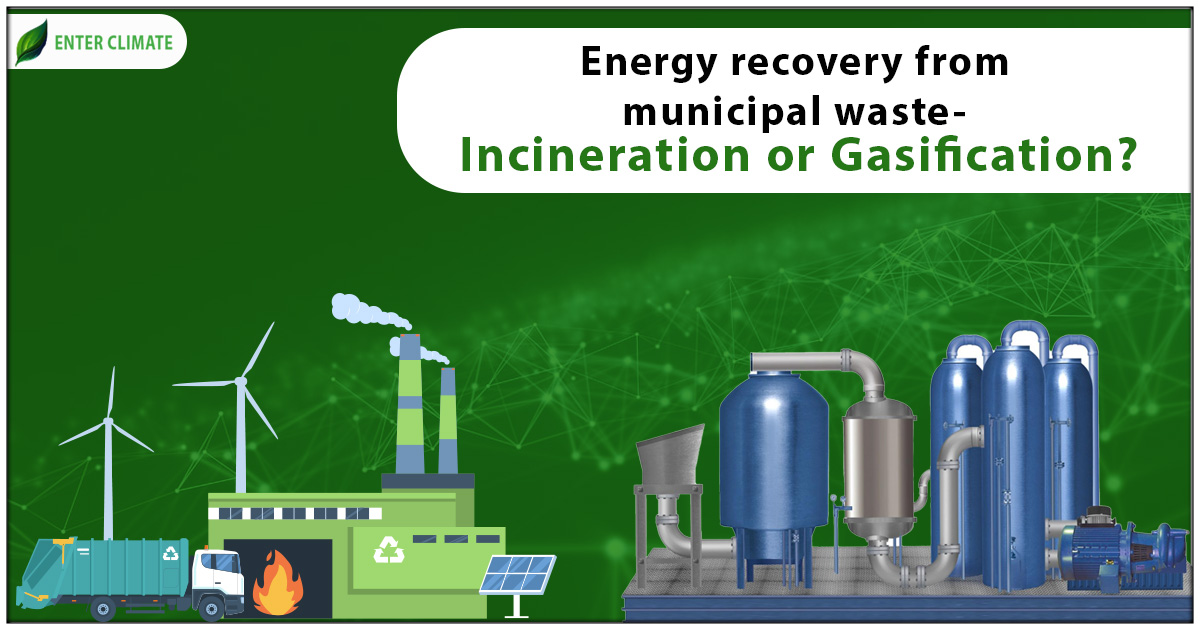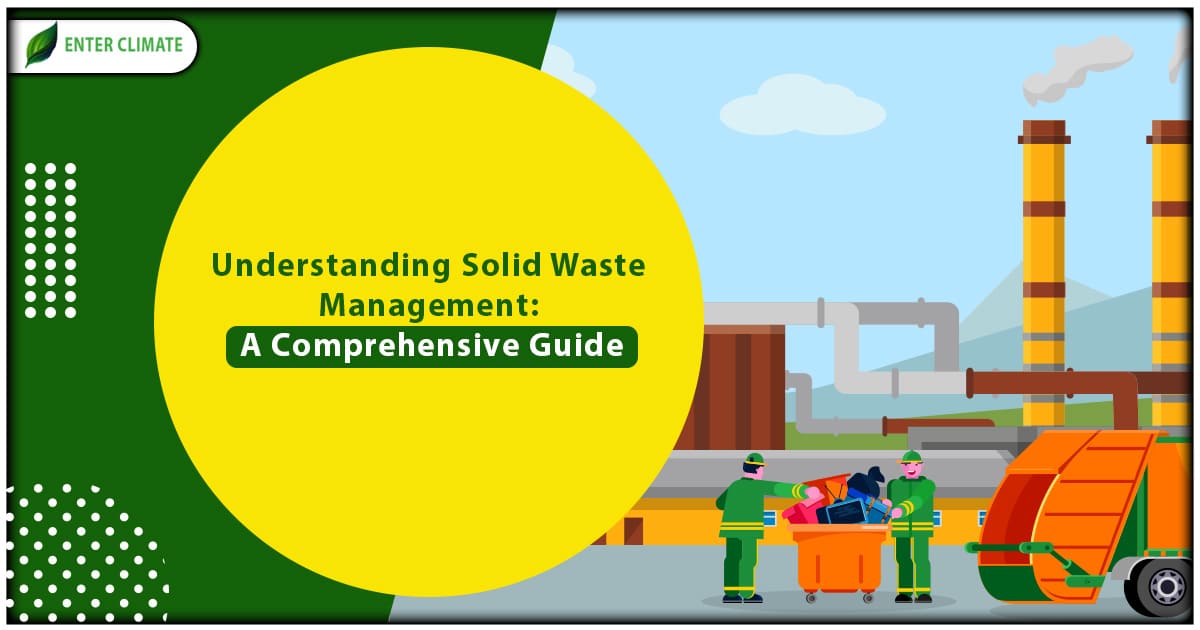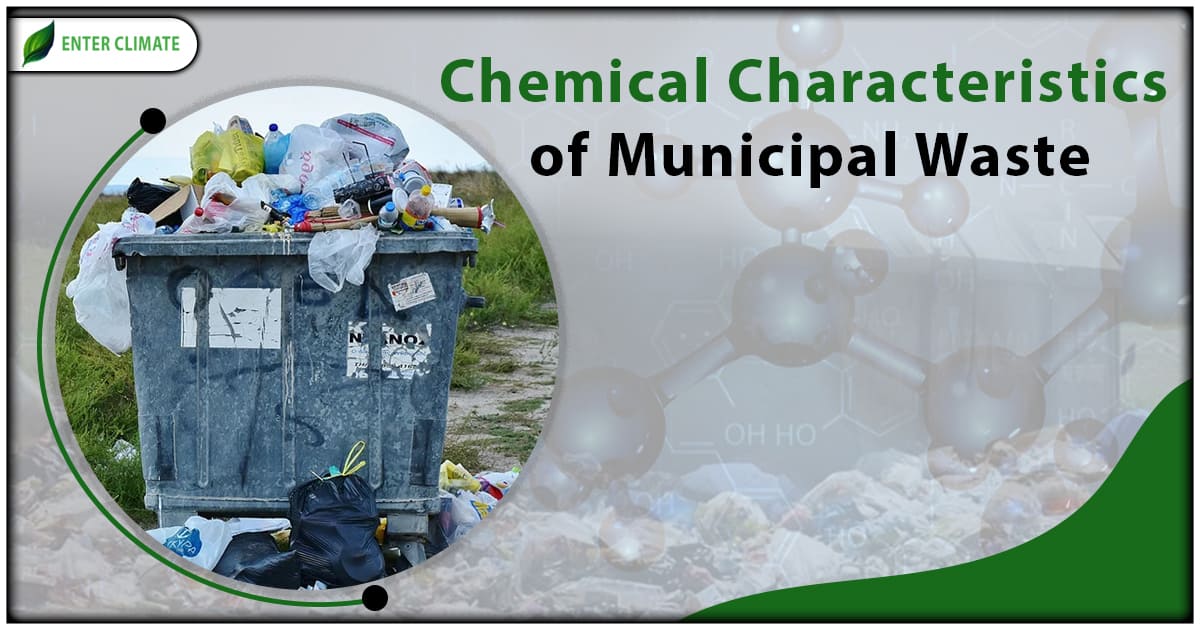Energy recovery from municipal waste- Incineration or Gasification?
 12 Jun, 2023
12 Jun, 2023 
In the next three decades, global waste generation is projected to increase to more than 3.7 billion tons annually, marking a 70% surge compared to the current yearly rate. This period is crucial for the transition to clean energy as countries strive to reduce carbon emissions and mitigate the impact of global climate change. Considering these pressing challenges, incineration has gained popularity as a viable solution. Unlike incineration, gasification does not involve the combustion of waste. Instead, it is a chemical process in which trash is heated in a low-oxygen environment until it breaks down into its constituent molecules. Gasification offers an alternative approach to waste management and energy generation that minimizes harmful emissions for Energy recovery from municipal waste.
Energy recovery from municipal waste [Incineration]
Incineration is a process that involves the combustion of organic materials, resulting in the production of various by-products, such as incinerator bottom ash, flue gases, particulates, and heat. This method serves as a means of reducing landfill waste volume by 95-96% and a waste-to-energy (WTE) technology.
- The heat generated through incineration can produce steam, which, in turn, can drive a turbine to generate electricity.
- Around 500 to 600 kWh of net electrical energy can be produced per tonne of waste incinerated.
- Therefore, incinerating approximately 2,200 tonnes of waste daily can yield around 50 MW of electrical power. The electricity production ranges from 0.5 to 0.7 MWh per tonne of municipal solid waste.
- Incineration reduces the mass and volume of waste in landfills, alleviating the burden of landfill management in urban areas.
- Incineration also helps prevent the release of methane, a potent greenhouse gas, into the atmosphere.
- In addition to methane, incinerating one tonne of municipal solid waste can prevent the emission of approximately one tonne of CO2.
- Incineration generates particles that contain toxic metals, dioxins, and furans, which can be so small that they may bypass pollution control devices.
- Furthermore, the process produces highly toxic fly ash that requires safe disposal, leading to concerns regarding transportation and residential health impacts.
Energy recovery from municipal waste [Gasification / Pyrolysis]
Gasification technology converts solid waste into valuable energy sources such as syngas, which can be used for electricity generation, heat production, or even as a feedstock to produce biofuels. Gasification is a cleaner process that does not present toxicity risks but is considered a “third-generation” technology. By harnessing the energy potential of waste, gasification enables revenue generation through the sale of electricity, heat, or biofuel products.
- Gasification and pyrolysis can convert organic materials like biomass, wood, and plastic waste into a gas mixture of carbon monoxide, hydrogen, and carbon dioxide.
- The conversion occurs at high temperatures (>700 °C) without direct combustion, using a controlled amount of oxygen and/or steam.
- Unlike incineration, gasification breaks down the waste chemically to produce synthesis gas (syngas) instead of generating energy through direct combustion.
- Syngas can be used directly in internal combustion engines or serve as a substitute for natural gas, chemicals, fertilizers, transportation fuels, and hydrogen.
- Pollutants are removed from syngas before combustion, resulting in lower emissions than other combustion technologies.
- Pyrolysis, like Gasification, converts waste into energy under controlled conditions without air, producing char, pyrolysis oil, and syngas that can be used as fuels.
- Both gasification and pyrolysis are highly efficient methods of utilizing biomass for energy and are more efficient than incineration.
- Existing gas-fueled devices can be retrofitted with gasifiers to utilize syngas as a direct replacement for fossil fuels.
- Gasification is a cost-effective and efficient energy generation process compared to steam-based incineration.
- Municipal solid waste can be significantly reduced (up to 75%) through gasification and pyrolysis, thus decreasing potential landfill emissions.
- Sorting and preparing solid waste for pyrolysis is well-established, and technological expertise is available in South Africa.
- These technologies are cleaner and do not pose toxicity risks compared to incineration.
- Gasification and pyrolysis are still considered relatively new or “third generation” technologies, with a limited number of operational plants worldwide, but their growth is expected in the future.
Energy recovery from municipal waste [Incineration vs Gasification]
| Category | Incineration | Gasification |
| Sludge Preparation | The consistency of sludge can vary, either wet or partially dried, which is determined by the specific furnace type (MHF/FCB) used. | The moisture present in sludge is eliminated by removing its water content, requiring a drying process to be carried out. |
| Process operation | The design aims to optimize the transformation of the feedstock into carbon dioxide (CO2) and water (H2O). A significant amount of excess air is utilized in the process. The operating conditions create a highly oxidizing environment. The operation is carried out at temperatures lower than the melting point of the ash, resulting in the formation of bottom and fly ash. | Created to optimize the transformation of raw materials into carbon monoxide (CO) and hydrogen (H2) as much as possible. Utilize a small amount of oxygen. Creating a reducing atmosphere. Operated at temperatures higher than the temperature at which ash melts. The mineral components are transformed into a glassy slag and fine particulate matter (char). |
| Gas clean-up and uses | Cleaning of flue gas takes place under atmospheric pressure. The treated flue gas is released into the atmosphere. Sulfur present in the fuel is converted into sulfur dioxide (SO2). | The syngas undergoes purification under high pressure. The treated syngas is utilized for chemical and/or power production, followed by the release of the resulting flue gas. Reduced sulfur compounds are recovered as either high-purity elemental sulfur or as a by-product in the form of sulfuric acid. |
| By-product handling | By-products: The energy recovery from municipal waste will generate glassy slag, particulate matter (PM), and process water as by-products. Glassy slag is a residue that has potential applications in construction materials. PM, also known as char, can be recycled back to the gasifier or undergo processing for the reclamation of metals. Process water, a system component, is typically recycled back to the gasifier for further use. Handling: The handling of these by-products involves specific procedures for their appropriate management. As suitable for construction materials, glassy slag can be utilized in relevant applications. If not recycled to the gasifier, PM is processed to reclaim valuable metals it may contain. Process water, an integral part of the process, is usually recycled back into the gasifier to ensure efficient utilization. | By-products: The energy recovery from municipal waste will generate glassy slag, particulate matter (PM), and process water as by-products. Glassy slag is a residue that has potential applications in construction materials. PM, also known as char, can be recycled back to the gasifier or undergo processing for the reclamation of metals. Process water, a system component, is typically recycled back to the gasifier for further use. Handling: The handling of these by products involves specific procedures for their appropriate management. As suitable for construction materials, glassy slag can be utilized in relevant applications.If not recycled to the gasifier, PM is processed to reclaim valuable metals it may contain. Process water, an integral part of the process, is usually recycled back into the gasifier to ensure efficient utilization. |
Conclusion
Incineration involves the combustion of waste at high temperatures, for energy recovery from municipal waste, resulting in the destruction of organic matter and the generation of heat and electricity. It effectively reduces the volume of waste and can handle a wide range of waste types. However, incineration requires careful emissions management to minimize environmental impacts and can be associated with air pollution concerns. On the other hand, gasification involves converting waste into a synthetic gas (syngas) through partial oxidation in a low-oxygen environment. Gasification offers the advantage of cleaner syngas with lower emissions compared to incineration. It can also handle various waste types and can increase energy efficiency. It is recommended to take environmental expert advice for meeting any legalities from municipal waste as it helps to achieve a hassle-free experience.
FAQ
- State how energy can be recovered from waste to energy plants?
Energy recovery from waste is converting non-recyclable waste materials into usable heat, electricity, or fuel through various processes, including incineration, gasification, pluralization, anaerobic digestion etc.
2. What is the process of energy generation from municipal waste?
The waste is burned, which releases heat. The heat converts the water into steam which is placed in a boiler. Then the high-pressure steam turns the blades of a turbine generator to produce electricity, and in this way, energy is generated.
3. State the purpose of energy recovery from waste?
Energy recovery from waste is part of the non-hazardous waste management hierarchy. Converting non-recyclable waste materials into electricity and heat generates renewable energy. It thereby helps reduce carbon emissions by offsetting the need for energy from fossil sources and reducing methane generation from landfills.
4. State the parameters that affect energy recovery?
The main parameters that affect energy recovery are:
- Quantity of waste, and
- Physical and chemical characteristics (quality) of the waste.
5. What is Gasification for Energy recovery from municipal waste?
Gasification technology converts solid waste into valuable energy sources such as syngas, which can be used for electricity generation, heat production, or as a biofuel feedstock. By harnessing the energy potential of waste, gasification enables revenue generation through the sale of electricity, heat, or biofuel products.













